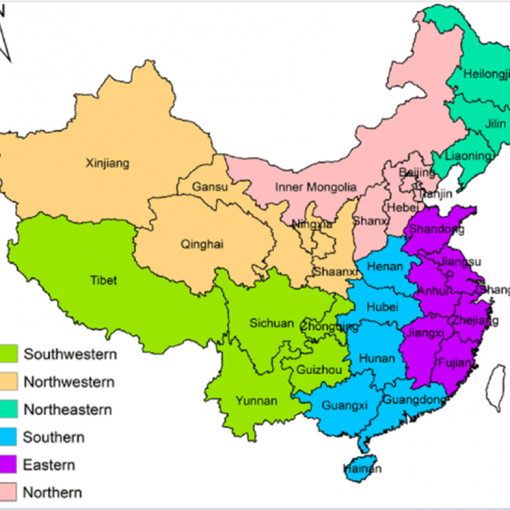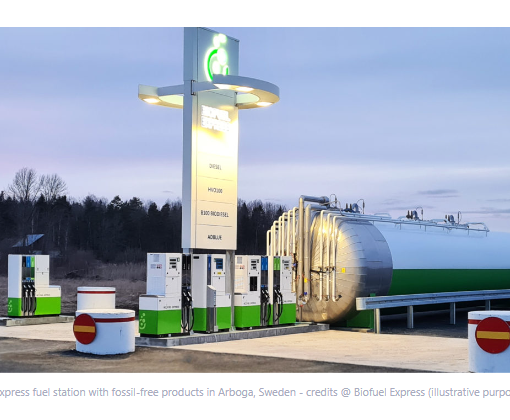April 26th
EARTH DAY – background in 1970s, history & goals for 2024.
Sunshine at last! Since I got back from Norfolk I have commenced a new routine, early run, set of exercises and then an hour or so of garden work. So far, I still have made barely any impact on the deteriorated standard of the grounds, especially the lawns. I swear there’s much more moss and weeds than previous years and the only answer has proved to be physical, hacking out roots and whole plants with my pickaxe! The picture shows the quantity gathered after only a few days work, but hopefully, if I keep at it, will eventually mean returning the grassy areas to a tidy state.


The barrow is mainly full of 3 types of weeds. Now, why I ask myself, do I have a pathological loathing for these plants – that could be considered wildflowers if I could be more charitable. It goes back to my farming roots, Dad and Grand Dad, who drummed into us the crime of seeing the 3 x D plants in any pasture – Dandelions, Dyshels (Cornish for Thistles) and Docks. That’s why I will continue to hack them out, but others I feel so positive about, it has been a pleasure to share to a visitor this past week. Susan, a relatively new friend recently arrived from Kenya, has come to live in Cornwall and thankfully to swell the ranks of workers in care homes. We had a lot of laughs together, as I gave her a lesson in our quaint and quirky names of English wildflowers. The first one was buttercup, which I showed could light up the pale area under my chin. She thought it was so funny, that the same magic would not work on her black skin! Next was the lover’s flower, Forget-me- not, followed by Blue Bells – which I said are late to arrive this spring. And joyfully, overhead swooped another late arrival – the first swallow of the year! 😊



Before we leave the topic of wildflowers, there is something else I see covering banks and path edges in our woodlands right now. That’s wild garlic, and I really dislike it, because I am intolerant of any contact, the smell and/or the taste. But here is something unexpected I discovered .. research has found that planting garlic as a choice in farm crop rotations can significantly reduce nitrogen oxide emissions, which means it can be used as an environmentally friendly, economic crop to optimize planting systems.
Earth Day, April 22nd – what is it and why?
Earth Day is a date chosen to focus on environmental awareness, which today includes a wide range of events coordinated globally by EARTHDAY.ORG (formerly Earth Day Network or EDN). It engages 1 billion people as participants, annually, in more than 193 countries.
The first Earth Day “brought 20 million Americans out into the spring sunshine for peaceful demonstrations in favour of environmental reform.”
As I will expand on later, each year has an official theme. In 2024 it is “Planet vs. Plastics.” 2025 will be the 55th anniversary of Earth Day.
To fill in some background, here is a short summary taken mainly from Wikipedia (which as it stands is a huge, rambling and somewhat disorganised article) …
In 1969 at a UNESCO Conference in San Francisco, peace activist John McConnell proposed a day to honour the Earth and the concept of peace. It was to be observed for the first time on March 21, 1970, the first day of spring in the northern hemisphere. Later the day was confirmed in a proclamation written by McConnell and signed by Secretary General U Thant at the United Nations.
Very soon after came a 2nd event. Senator Gaylord Nelson had proposed the idea to hold a nationwide environmental ‘teach-in’, at colleges across the country and this took place on April 22, 1970. Nelson hired a young activist, Denis Hayes, to be the National Coordinator. Today, as Board Chair Emeritus of Earthday.org, Hayes says Earth Day is “the largest secular day of protest in the world, and more than a billion people participate in actions every year.”
Within this period, also, a very important NGO was set up – The U.S. Environmental Protection Agency (EPA) to be responsible for the protection of human health and the environment.


So where did the seeds of this idea come from? Nelson had long sought ways to increase the impact of the environment as a political issue. As influences he listed Rachel Carson’s 1962 book, Silent Spring, the famous 1968 Earthrise NASA photograph of the Earth from the Moon, the saturation news coverage given to the Santa Barbara oil spill and the Cuyahoga River catching fire in early 1969. These led him to think the time was ripe for an environmental initiative and – bringing on board Fred Dutton, a prominent Democratic who had been Robert Kennedy’s presidential campaign manager – the small team agreed and published their conclusion, that environmental teach-ins on college campuses could serve as a suitable vehicle.



Expansion soon saw the event spread out to include the entire United States. Unexpectedly, key non-environmentally focused partners played major roles, such as the union of United Auto Workers (UAW), which was a vitally important outside financial and operational supporter of the first Earth Day. According to Hayes: “Without the UAW, the first Earth Day would have likely flopped!”
In 1990 Hayes re-launched with an international scope and organised events in 141 nations.
Politics and the focus on pollution
The delicate line, straddled by organisers, was to attract seasoned activists, who would demand far-reaching change, without alienating the middle classes, whose active participation and political support were seen as essential. It was already clear that the greatest environmental insults are visited on the poor. Factories and power plants are located in the poorest neighbourhoods. Historically, freeways were plowed through and toxic waste dumps located in the poorest neighborhoods. But such problems would never be foisted on the middle classes.
The solution was to promote an overarching concern with air and water pollution, since those affect us all, while encouraging each community to pay attention to whatever other issues were of most concern for them.
1990 to 1999
Mobilising 200 million people in 141 countries, Earth Day activities in 1990 gave a huge boost to recycling efforts worldwide and helped pave the way for the 1992 United Nations Earth Summit in Rio de Janeiro. Unlike the first Earth Day in 1970, this 20th Anniversary was waged with stronger marketing tools, greater access to television and radio, and multimillion-dollar budgets.
2000–2019
Earth Day 2000
As the millennium approached, Hayes agreed to spearhead another campaign, this time focusing on global warming and pushing for clean energy. Combining the big-picture feistiness of the first Earth Day with the international grassroots activism of Earth Day 1990, in 2000 a big change was using the internet to help link activists around the world. By the time April 22 came around, 5,000 environmental groups worldwide were on board, reaching out to hundreds of millions of people in a record 184 countries.
Earth Day 2003
The theme was the Water for Life Campaign, when Earth Day Network developed a water quality project called “What’s in Your Water?” Water-related events were held on every continent. Educational curricula, teacher’s guides, water testing kits, and posters focused on water.
Earth Day 2008 …
galvanized millions of people around the world in a (phone) Call for Climate. In the U.S., the campaign challenged the public to make one million calls to Congress about pushing for climate change legislation.
Earth Day 2010 (40th anniversary)
An estimated one billion people around the world took action for the 40th anniversary of Earth Day.
Earth Day 2012
A Billion Acts of Green were achieved, announced at the United Nations Conference on Sustainable Development in Rio. This year saw Catholic parishes and churches across the U.S. take action through sermons. Other churches and faiths joined in helping to set up a National Religious Coalition on Creation Care (NRCC). On the other side of the planet, hundreds of “Mobilize the Earth™” events were put on throughout all of India’s states and geographic regions.
2016 Earth Day Signing of the Paris Agreement at the UN
It was no accident that the United Nations selected Earth Day to sign the most significant climate accord in the history of the climate movement. World leaders from 175 nations broke a record coming together for this cause; signatories were the United States, the United Kingdom, China, and 120 others, thus ratifying the United Nations Climate Change decision of 2015, at a Conference in Paris. Numerous communities engaged in an entire week of activities focused on the environmental issues that the world faces.
Earth Day 2017
The ED Network set out a vision of a world that truly understands climate change and is aware of its unprecedented threat to our planet. Environmental and climate literacy is the engine not only for creating green voters and advancing environmental and climate laws and policies but also for accelerating green technologies and jobs.
Earth Day 2018
In this year the campaign to End Plastic Pollution was dedicated to building a world of educated citizens who understand the environmental, climate, and health consequences of using plastic. Through an online Plastics Pollution Calculator, consumers calculated how much disposable plastic they used in a year and planned how to reduce this amount of waste. A Plastic Pollution Primer and Action Toolkit also educated consumers about actions to reduce their plastic footprint. The phrase “plastic pollution” on social media in the U.S. alone reached more than 155 million people. As a result, over 23,0000+ plastic cleanups were registered on Google, 60 countries introduced single-use plastic bans and legislation, and companies such as Coca-Cola and Starbucks announced steps to eliminate and significantly reduce plastic pollution.
2020–2030
Earth Day 2020 – the 50th Anniversary
Celebrations included activities such as the Great Global CleanUp, Citizen Science, Advocacy, Education, and art. The theme for Earth Day 2020 was “climate action”.
Earth Day 2021


The Earth Day 2021 theme was Restore Our Earth when the Biden administration organised a 2021 Leaders’ Climate Summit. This virtual Zoom-like meeting featured 40 world leaders and dozens of speakers, including Pope Francis.
Earth Day 2022
The Earth Day 2022 theme was Invest in Our Planet and featured The Great Global Cleanup, Sustainable Fashion, Climate and Environmental Literacy, Canopy Project, Food and Environment, and the Global Earth Challenge. Earthday.org announced that more than one billion citizens had participated.
Earth Day 2023
Earthday.org announced the continuation of the “Invest in our Planet” theme for 2023 and a collection of images of Earth taken from various deep space distances in the Solar System was published.
Earth Day 2024
The theme for Earthday.org 2024 is Planet vs. Plastics and to mark that Earthday.org has called for a 60% global reduction in plastic production by 2040.
In November 2023, to bring public attention to the health threat that microplastics pose, earthday.org released its report Babies vs. Plastics, which collated some of the latest science on the subject.
Microplastics, those minuscule particles shedding from the plastic items that fill our lives, are not just an environmental concern. They pose serious health risks, particularly to our children. The report uncovers how these particles find their way into vital organs and could potentially disrupt biological functions, from developmental milestones to immune responses. The results are based on studies from over 120 sources and highlight an unsettling trend, that infants might be ingesting microplastics at ten times the rate of adults. The causes are proposed as being their natural exploratory behaviours and close daily contact with plastic products, such as toys, clothes, and baby bottles.
The Guardian newspaper added that the report also highlights that the children of the Global South are being impacted the most, by exposure to microplastics.
To achieve a 60% reduction by 2040, EARTHDAY.ORG’s goals are: (1) promoting widespread public awareness of the damage done by plastic to human, animal, and all biodiversity’s health and demanding more research be conducted on its health implications, including the release of any and all information regarding its effects to the public; (2) rapidly phasing out all single use plastics by 2030 and achieving this phase out commitment in the United Nations Treaty on Plastic Pollution in 2024; (3) demanding policies ending the scourge of fast fashion and the vast amount of plastic it produces and uses; and (4) investing in innovative technologies and materials to build a plastic-free world.

And another great headline, which I found via the local TV news, tells that Surfers Against Sewage charity has nominated Penzance as the first Plastic Free town in the UK. https://www.telegraph.co.uk/women/life/town-turned-back-plastic/ or
https://www.penzance-tc.gov.uk/plastic-free-penzance/ or https://plasticfree.org.uk


Things you could do
Get involved in or set up a clean-up in your own community, and/or email about the Treaty mhtml:file://C:\Users\Caroline\AppData\Local\Microsoft\Windows\INetCache\Content.Outlook\LRK7QVNZ\email.mht
Future Events in Cornwall
Every Tuesday from April 30th = Treffry Tales in Fowey. Email your enquiry@themeadowbarns.co.uk
Saturday May 4th – A walk at Black Head, looking into history and landscape. Free but must pre-book. https://cornwall-landscape.org/guided-heritage-walk-to-black-head-cliff-castle/
Saturday May 11th – The Spanish/Iberian River Rescue organisation calls for an international river walk day. And locally, there is a walk along the Fowey River. The start is Bodmin Parkway station and it looks like the end is Golant for pub lunch. But how does one then get home? I will find out more for next week. https://cirefluvial.com/walkingrivers/en/




